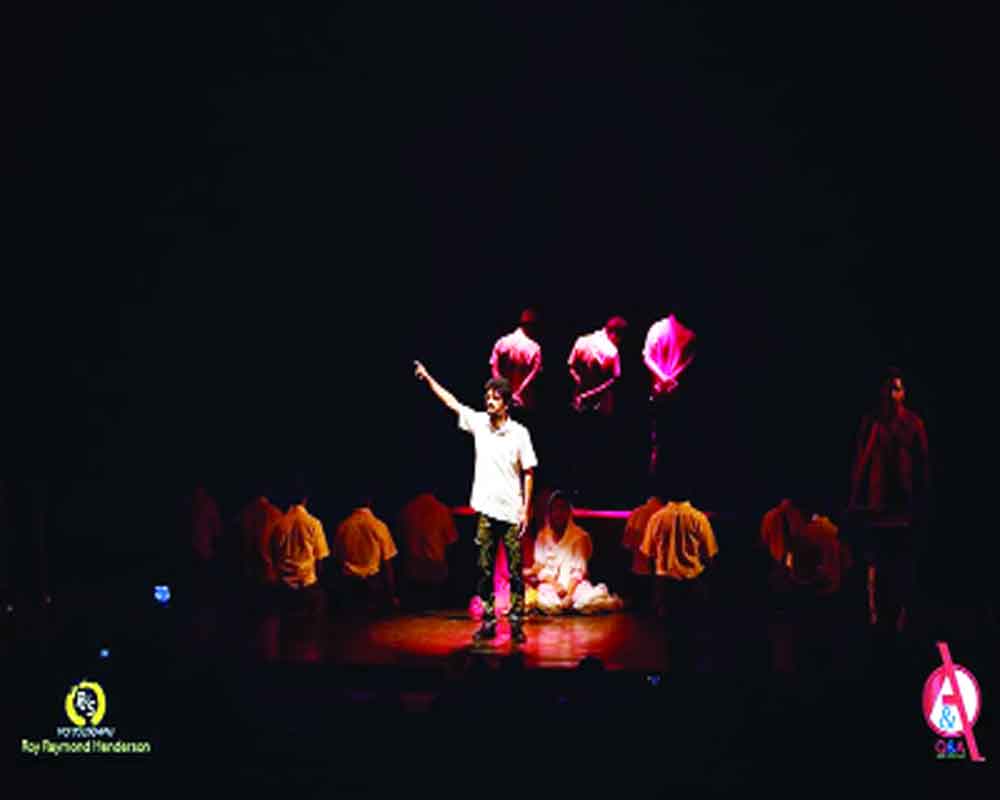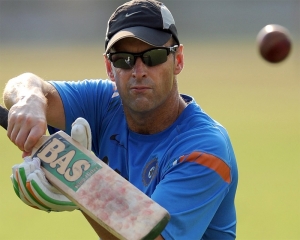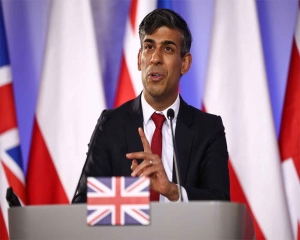Playwright Piyush Mishra’s Gagan Damama Bajyo returns to the stage after 16 years. Chahak Mittal reviews the play, which has become even more relevant with time as it attempts to awaken a sense of responsibility among today’s young people and inspire them with Shaheed Bhagat Singh’s ideologies
What can you say about a 23-year-old boy who died? Rather sacrificed his life for his nation’s good? Even though school textbooks and various films and plays have created multiple images of legendary Shaheed Bhagat Singh as someone who put the nation first when it was under the control of the British, I see him as the model of a well-educated and responsible youth whose wisdom and understanding of the plight of India at the time was far beyond his age. He profusely apologised for killing superintendent John Saunders and killed him despite knowing its consequences. He did it because for him, ‘it had to be done.’ He fought for the cause, and later, gave himself to it, quite consciously. However, he made sure he kept the flame burning in people’s conscience to fight for their rights.
Playwright and director Piyush Mishra’s Gagan Damama Bajyo, which returns to the stage after 16 years, presents an idea of the legendary fighter as somebody who, as opposed to what Mahatma Gandhi and other Congressmen followed, fought through violence against the British Raj. He looked at armed struggle as the only way out and a means for direct action that could spur the quickest results. The title of the play, a phrase derived from the Guru Granth Sahib, translates to ‘Tu aaj se hi bhid jaa, baaki dekh lenge’ (Rush headlong into the battle, the rest will be looked at later). While I have imagined the martyr as a simple man adorning a white kurta-pyjama and a turban on his head, Mishra’s Bhagat Singh and his troupe are dressed in crisp plain-white shirts and Cargo men’s pants, more like modern-day crusaders.
The play begins with a mother scrutinising the British government’s regulations as she had lost her sons, who had fought relentlessly for the rights of the nation and given themselves to it when the need came. She is petrified of people who sleep soundly despite the dark days and questions, “Do you want to lose more?” Yes, the nation has stopped commemorating their martyrdom — March 23 — but the character’s cry was more about lament that today’s young people have forgotten the ideals of these revolutionaries and lost the power to protest.
The play’s plot proceeds with two parallel events where Shiv Verma, one of the compatriots of the Hindustan Socialist Republican Association (HSRA), is in a time zone of 1994 and recalls the series of events that had happened during 1928-1931. These include the Kakori robbery, bombings hurled at the Assembly, hunger strike in Lahore prison, and Singh, Rajguru and Sukhdev’s hanging. It was an impressive non-linear shuffle between time and space, which seamlessly transitioned the audience from the past to the future and the present to the past. And the best part was that one couldn’t really point out to one thing as it was very subtle and blended with the plot well.
Going as per what Mishra had said, “Our history textbooks have not done justice to the idea of Sardar Bhagat Singh Sandhu. From his ideology to his complete name, there are many things which our students still do not know about.” While they might believe that he hurled bombs at an assembly, killed people and stood against Mahatma Gandhi, the play showcases how he only opposed the idea of Indian leaders collaborating with the Whites. Such an approach, the young revolutionary had argued, could have ended the British rule in India but wouldn’t have brought the “British rule” out of India. The ideologies would have remained the same — repressive — just the rulers would have changed. It was just a shoutout to make people stand up as well as a revolt against the Gandhi-Irwin pact. But it could very well apply to us, a call to think deeply about our systemic wrongs.
He talks about hunger prevailing in the society when he says, ‘Bhooke so rahe hain log aur party movement band kara rahi hai,’ (talking of the non-cooperation movement which was called off by Gandhi ji). Shiv Verma recalls how Bhagat Singh as a leader was not worried about independence but the India after the independence. “Azaadi zaroori nahi, azaadi ke baad ka Bharat zaroori hai,” says Singh as he was very well aware that independence was inevitable. After the Lahore conspiracy verdict, he says, “Humara inquilab aayega. Yeh alag baat hai hum usey zinda aankhon se dekh paate hain ya nahi.”
Through modern-day humour, the play uses satirical comedy stitched amid serious scenes in the plot to make it more relatable. There is a scene where Singh’s friends confront his father when he asks about his whereabouts. When they try to stall the question by answering that they had no information, he says in a loud tone, “Baap hain hum tumhaare” and grabs some laughs.
Even Singh’s fiancee makes up for some giggles in her short-lived yet essential presence on the stage. It makes one wonder how even the smallest of characters play such an important role in the plots.
At various moments throughout the 120-minutes run, the dialogue delivery of the actors made one get goosebumps. One of the dialogues that stands out for me is when Singh says, ‘Kal jab maine jamadaar ke aath (8) saal ke bete ko naara lagate dekha, toh mera maqsad poora hogaya (Yesterday, when I saw an eight-year-old son of a ragpicker calling out slogans, I felt my objective had been accomplished).
The play is quite swift in representing a number of things within the span of just two hours. For instance, Lala Lajpat Rai’s death is depicted in a very flowing manner, rather than stretching it out. And the musical elements embedded in between the plot vividly explain every emotion.
The play, produced by Question Associates (Q&A), eloquently looks at the differences that have come about after their hanging. And commenting on the present, it comes to a final note when everyone is mourning Singh’s hanging. Three heads are hung in the backdrop with blood red light, and Shiv Verma, in 1994, questions, “Kya yehi tha voh azaad Bharat ka sapna jisko paane ka tasawoor tumne liya tha, Bhagat?” Even though the play’s timeline ends in 1994, it questions the audience even today about their idea of nationalism and how today’s youth is growing to be ignorant about multiple events of corruption and injustice prevailing in society. After all, what does this generation’s 23-year-old want? Certainly, he wouldn’t choose to die for the nation as fearlessly as Singh did, nor would he sacrifice his love interest for the greater good.


























